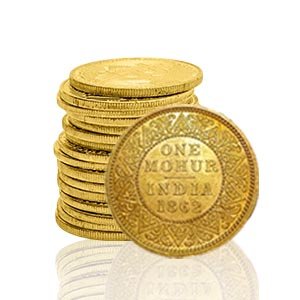India’s rich and diverse history is mirrored in its coinage, which has evolved over millennia, reflecting the subcontinent’s economic, cultural, and political changes. The history of Indian coinage is a fascinating journey that spans ancient kingdoms, colonial rule, and modern republics. Let’s delve into the evolution of Indian currency, exploring its origins, transformations, and the stories behind some of its most iconic coins.
Ancient Coinage: The Beginnings
India’s numismatic history dates back to around the 6th century BCE, during the Mahajanapada period. The earliest coins were punch-marked pieces of silver known as punch-marked coins. These coins, issued by various Janapadas (tribal republics) and Mahajanapadas (great kingdoms), featured symbols like animals, trees, hills, and human figures punched into their surfaces.
These early coins were not standardized in terms of weight or size, reflecting the diverse and fragmented political landscape of ancient India. Notable examples include coins from the Magadha kingdom, which played a significant role in early Indian history.
Classical Age: Mauryas to Guptas
The Maurya Empire (c. 322–185 BCE), founded by Chandragupta Maurya, marked a significant development in Indian coinage. Under the guidance of Chanakya, the empire issued coins featuring the symbol of a peacock, reflecting its imperial insignia. The Mauryan coins were typically made of silver and copper and adhered to a more standardized weight system.
The Gupta period (c. 320–550 CE) is often referred to as the Golden Age of India, and its coinage is celebrated for its artistic excellence. Gupta coins, primarily gold dinars, showcased intricate designs depicting Hindu deities, kings, and scenes from mythology. The craftsmanship of Gupta coins set a high standard for Indian numismatics and provides invaluable insights into the empire’s prosperity and religious life.
Medieval Period: Regional Kingdoms and Sultanates
Following the decline of the Gupta Empire, India saw the rise of several regional kingdoms and the advent of Islamic rule with the Delhi Sultanate (1206–1526). This period witnessed significant changes in coinage, with the introduction of Islamic motifs and inscriptions in Arabic and Persian. Coins from the Sultanate period often featured the name of the ruler, minting location, and the Islamic declaration of faith.
The Vijayanagara Empire (1336–1646), a prominent South Indian kingdom, issued coins in gold, silver, and copper, bearing images of Hindu deities and Kannada and Telugu legends. These coins are notable for their artistic quality and depiction of the empire’s patron deities, such as Lord Venkateswara and Garuda.
Mughal Era: Grandeur and Standardization
The Mughal Empire (1526–1857) brought a new level of sophistication and uniformity to Indian coinage. Mughal emperors like Akbar, Jahangir, and Shah Jahan issued beautifully crafted coins in gold, silver, and copper, featuring Persian inscriptions, zodiac signs, and portraits of the emperors themselves.
One of the most famous Mughal coins is the mohur, a gold coin that exemplified the empire’s wealth and grandeur. The Mughal coinage system was highly organized, with coins struck at numerous mints across the empire, ensuring consistency and reliability in trade and commerce.
Colonial Period: The British Raj
The arrival of European powers, particularly the British East India Company, marked a significant shift in Indian coinage. The Company initially issued coins modeled after local designs but gradually introduced uniform coinage in line with British monetary standards. The transition from Mughal to British coinage saw the introduction of coins bearing the effigies of British monarchs and inscriptions in English.
By 1835, the British had established the Uniform Coinage Act, standardizing coinage across India. Coins from this period included the rupee, which became the standard currency unit, and featured the portrait of Queen Victoria, and later kings Edward VII, George V, and George VI.
Modern Era: Post-Independence Coinage
Following India’s independence in 1947, the country introduced its own coinage, initially retaining the British-style designs but gradually incorporating national symbols. The first series of Indian coins featured motifs like the Lion Capital of Ashoka, agricultural themes, and figures symbolizing progress and unity.
In 1957, India adopted the decimal system, replacing the anna series with the modern rupee and paise. The contemporary Indian coinage continues to evolve, with regular updates to designs and the introduction of new denominations to commemorate significant events, leaders, and cultural heritage.
Conclusion
The history of Indian coinage is a testament to the subcontinent’s dynamic and multifaceted past. From ancient punch-marked coins to the digital transactions of today, Indian currency has continuously adapted to changing political, economic, and cultural landscapes. Each coin tells a story, reflecting the era in which it was minted and offering a glimpse into the rich tapestry of India’s history. As we move forward in the digital age, the legacy of these coins remains a cherished part of India’s heritage.


